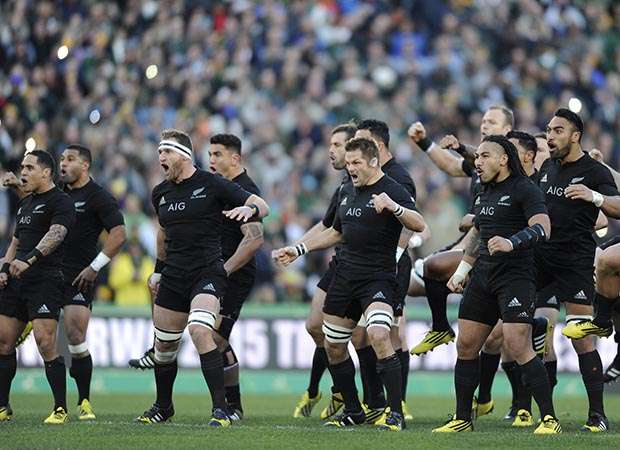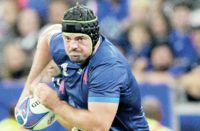 Holy cow! The haka defence brigade were out in force last week with the England 2003 World Cup winner, Matt Dawson, firmly in their sights. The former scrum-half, now a TV broadcaster, had the temerity to give the Maori war dance/'welcome' dance adopted by the All Blacks a gentle ribbing by featuring in a spoof advert, on behalf of a clothing company, featuring a dance called the ‘Hakarena'.
Holy cow! The haka defence brigade were out in force last week with the England 2003 World Cup winner, Matt Dawson, firmly in their sights. The former scrum-half, now a TV broadcaster, had the temerity to give the Maori war dance/'welcome' dance adopted by the All Blacks a gentle ribbing by featuring in a spoof advert, on behalf of a clothing company, featuring a dance called the ‘Hakarena'.
In it Dawson leads a troupe of blokes in rugby kit in a few loosely choreographed dance moves to the tune of the Macarena, the song which was a hit for the Spanish group Los Del Rio in the 1990s. At the end he exhorts us to, “Have a go at the Hakarena…maybe we'll put the All Blacks off their rythm”.
Hardly hilarious, but harmless enough stuff. However, sections of the New Zealand media were soon in holy cow mode, with one report describing the ad as being, “in true pompous Pommy style”.
In no time Sir Pita Sharples, a former leader of the Maori Party, also weighed-in, calling the ad “insulting”. Sharples said: “The haka is done as a way of honouring the enemy. You do it if you're up for a challenge. By doing the haka as the All Blacks do, it's recognising the worth of the other side. So, if they're doing something to mock the haka, then that's pretty shameful.”
There's a spaghetti of confusion around what is permissible when, as an opponent, you face the haka – not least in the minds of its New Zealand guardians, and World Rugby, who fine any team that advances over the 10m line towards it.
On the 2005 Lions tour Sir Clive Woodward pandered to All Black sensitivities over the haka by seeking clarification from Maori elders about the correct response.
The Lions were apparently told that their leader should pick up an imaginary leaf, and throw it back towards the All Blacks. Tour captain Brian O'Driscoll did as he was bid before the kick-off to the first Test in Christchurch, and moments afterwards was upended by Tana Umaga and Keven Mealamu and driven shoulder-first into the pitch. He was carted off with a dislocation that sidelined him for the rest of the tour and caused untold rancour. So much for protocol.
The introduction of a new haka, ‘Kapa o Pango', in 2005, which was composed specifically for the All Blacks and finished with a throat-slitting gesture, has also been mired in controversy. Its creator, Derek Lardelli, has tried – unconvincingly – to defuse the issue saying that it has been misunderstood.
He says the throat-slitting gesture is symbolic. “Playing rugby at this level, with this intensity, is the cutting edge of sport…the players are on the knife edge. They are gladiators in the arena…”
Here's another, more plausible, explanation. The award-winning Kiwi film Whale Rider, is the story of a young Maori girl's attempt to convince her tradition-bound grandfather that she, rather than a male, is destined to be the tribal chief. At one point he shows her a moko pattern of a grimacing face, and reminds her fiercely that it represents the severed head of an enemy. This is because the severed heads of vanquished enemy chiefs were displayed on the posts of Maori marae (stockaded villages), just as they were in our own history by Saxons, Vikings and Normans.
It's time that the haka defence brigade stopped being so precious, and pompous, and got their script together regarding what it represents – but war-dance seems closest to the truth where the All Blacks are concerned.
That's why I've never subscribed to the view that the opposing team should be forced to be passive while the Maori challenge is being performed. If they want to go for a run around the pitch or greet the fans, that should be their prerogative.
Many people believe that the haka, rather than being a sacred part of Maori culture, has become overblown and over-commercialised since its annexation by the All Blacks in the pro era.
Let the All Blacks do the haka for themselves, the crowd, and any team that wants to watch it. But before the anthems – not as some sacred last statement.


























